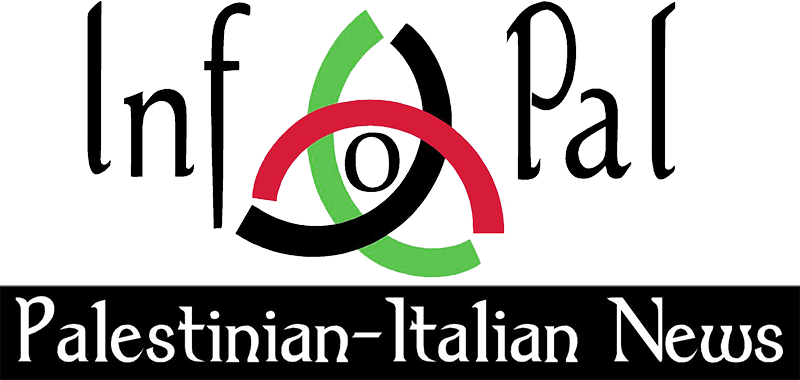Vi invio un reportage su Qalandia, il check-point frontiera rimodernato dall’esercito israeliano a fine 2005. Il progetto che fa di Qalandia un "processing terminal", nel linguaggio adottato dall’Esercito di Difesa Israeliano, fa parte di un più ampio disegno che porta alla realizzazione di 7 Processing Terminals nella sola Cisgiordania.Sette vere e proprie frontiere in quel che resta del Territorio Occupato della Cisgiordania. Mi è capitato di passarci poco dopo, a gennaio 2006.
Ecco cosa succede a Qalandia ogni giorno:
i palestinesi che intendono uscire da Ramallah, per recarsi nella maggior parte dei casi a Hebron e Gerusalemme, ma anche nei villaggi vicini circondati dai più recenti insediamenti israeliani, vengono suddivisi per età e genere e fatti incanalare nelle porte scorrevoli che vedete dopo aver attraversato un lungo corridoi di filo spinato che l’aministarazione israeliana ha incominciato a riprodurre agli inizi della seconda Intifada, in piena violazione delle convenzioni internazionali.Infatti il filo spinato è dotato di lame che tagliano la pelle in profondità.
La lunghezza della procedura varia da alcune decine di minuti ad alcune ore, a seconda degli umori dei giovani soldati israeliani che controllano il Processing Terminal.Spesso le famiglie che abitano poco fuori da Qalandia e si recano a Ramallah per fare una semplice spesa, ci impiegano tutta la giornata.Alcune di loro non riescono a trasportare tutto ciò che acquistano. Infatti le porte scorrevoli hanno dimensioni ridotte e sono scorrevoli per modo di dire.Si passa uno alla volta, e l’apertura delle porte è controllata con un pulsante da militari israeliani.Lo porta non gira, ma fa uno scatto di un giro e poi si blocca.Chi non fa in fretta rimane incastrato.
Tutto questa rientra in una più ampia politica israeliana di "ristrutturazione" dei check-point. Ai miei occhi è sembrato, oltre che la creazione di una vera e propria frontiera, una applicazione di mezzi di controllo sempre più tecnologicamente sofisticati alla sorveglianza degli spostamenti della popolazione palestinese.L’effetto che i palestinesi in fila percepiscono, è quello di un ulteriore disprezzo;infatti molti di loro si sono resi conto che i militari non intendono nenache più avere un contatto fisico diretto. Come molti fanno notare "i militari hanno sempre più paura di noi".Ogni giorno a Qalandia i militari restano seduti dentro gabbiotti antiproiettili annullando il contatto fisico della sorveglianza, spingono un bottone, e se qualcuno rifiuta di immettersi nelle file prestabilite escono dai gabbiotti armati fino al collo intimando i "rivoltosi".
Nicola Perugini
Università di Siena
Qalandiya-new ‘terminal’-3.1.06
Photos: Norah Orlow, text: RoniHammerman
MachsomWatch
RoniHammermann
20.12.05
www.machsomwatch.org
Congratulations!!! The new terminal was inaugurated today at noon!
We arrived at QalandiyaSquare at 13:30 and followed the stream of people entering the terminal to go north. We went
unchecked through an open corridor and came to the northern part. There the terminal commander stopped us and
informed us that according to an order of MickyEdelstein,thedivision commander, we were not allowed to be on the
premises of the terminal. A phonecallto MickyEdelstein confirmed this. Before returning we observed the car
passage, which did not yet pass through the terminal. It was unbearably crowded, the wait was long and the checking
deliberately slow.
We wanted to return and queued up with the Palestinians
First stop -there are three electronically operated turnstiles. No soldiersin sight. Orders are given by loudspeakers:
`one by one!`, `no pushing!`, `only blue IDs can pass !`. While waiting, the Palestinians can enjoy encouraging
electronic messages, such as `welcome`!
Observation -the collective punishment after the stabbing of the soldier 10 days ago continues!
After 30 minutes of wait the turnstiles were opened and about 25people could continue on their way. We walked along
fenced lines and arrive at a row of eight turnstiles, four of which were operated.
Second stop -we choose the least crowded one and waited again. On the other side of the turnstiles we saw a
conveyor belt for luggage checking and a metal detector. One by one we were released into the third stop.
Third stop -alongside the conveyor belt and the magnometerwere bulletproof glass windows with small slots for
sliding in the IDs, heavy metal frames and behind the windows soldiers -at last ! The `communication` took place over
loudspeakers and we hearedthe soldiers screaming as usual: `forward!` `can`tyou prepare your ID in advance! (to an
old woman) and when the magnometerrang when an old man with a stiff leg passed `Stop! What do youhave here, for
heaven`ssake`, until the man could explain that he has a nail in his leg.
While the IDs were being checked the luggage went through the conveyor belt and fell to the ground on the other side,
because no table was attached to the belt.
Obsevation-no physical contact between soldiers and Palestinians, but cursing and bullying as usual, but over
loudspeakers!
After this we came to another row of turnstiles, leading out of the terminal.
Without having seen everything, we realized that the terminal isoccupation in its most perfected, alienated,
bureaucratically cruel form. The key problem, of course, remainsunresolved: who has the right of passage. This is
decided on another level and there are no ways to change this decision at the terminal.
Another issue is the fact that the QalandiyaTerminal is situated on Palestinian territory and by turning into a
permanent border crossing between the West Bank and Jerusalem, it grabs a big chunk of land and brings it to the
Israeli side.
